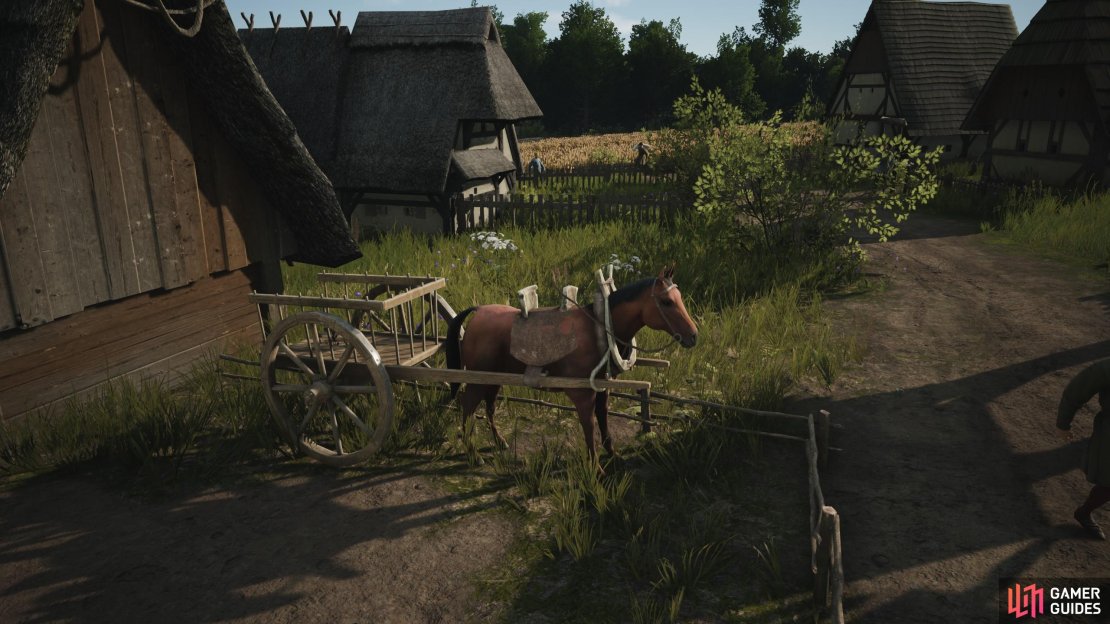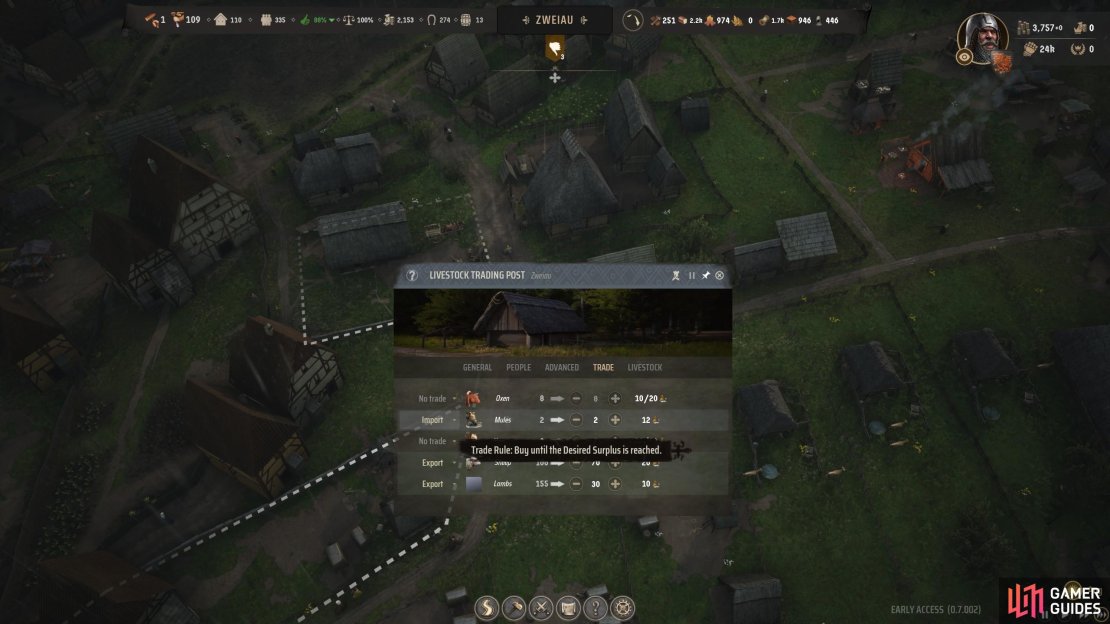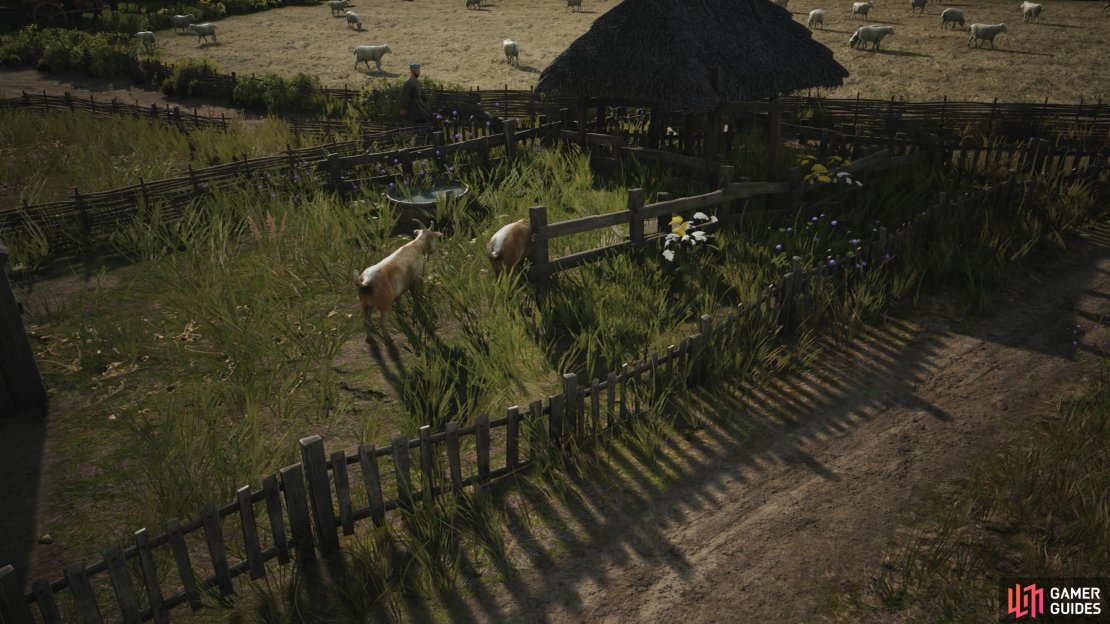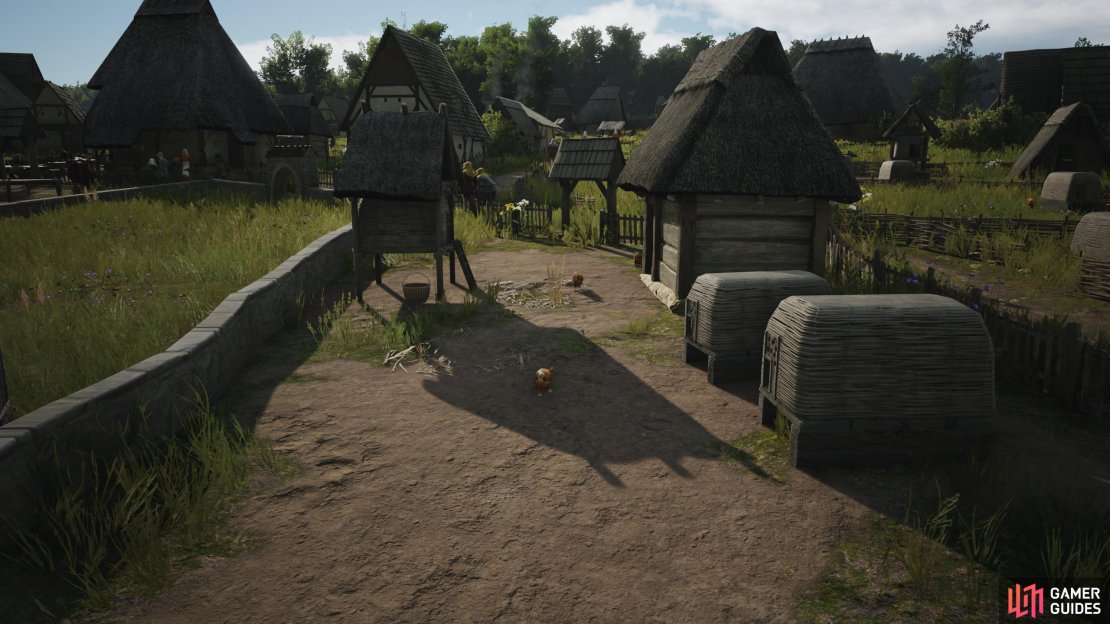Livestock is an important part of Manor Lords, as animals will assist players with crafting to logistics. If you want to use animals and livestock as part of your settlement ambitions, our guide will assist you with that journey.
How Livestock Works¶
Livestock in Manor Lords are typically creatures that are managed by citizens at various jobs. In the early access launch, there are:
- Sheep & Lambs - Managed by Sheep farm workers
- Horses - Hitching Post / Stable or Trading Post Workers
- Oxen - Hitching Post / Stable Workers or Farmhouse Workers
- Mules - Livestock Trader
- Goats - Burgage Plots
- Chicken - Burgage Plots
- Deer - Hunter’s Camp
To increase how much livestock you can have, you will need to build more hitching posts and upgrade them into small stables. You can also get some livestock space by building livestock trading posts, which come with space for two animals. Each hitching post has one slot for an animal, while small stables have two. Upgrading to a stable requires two planks and a hitching post only needs one log. The livestock trading post can also pasture four sheep.
Each livestock has different tasks that it can fulfill. We’ll go a bit more in detail on what each one can do below.
Oxen¶
Oxen aids players with transporting lumber and sawmills to building sites. They can also plow farm fields with the right development.
Oxen are a form of manual labor livestock in Manor Lords. Oxen typically assist with heavy logistics of your settlements. They can help transport heavy logs to building sites or transport large amounts of goods around for logistical transportation. If you have the Heavy Plowing upgrade from the farming developments, you can assign Oxen to work at Farmhouses in the advance menu, and they’ll assist with speeding up plowing the ground of any farm fields that need plowing.
To get Oxen, you can click on a hitching post, and press the hire Oxen button. It will cost around 20 regional wealth to hitch a new oxen at the post. This has a cooldown of around 30 in-game days, aka you can do it once per month.
Horses¶
Horses are livestock in Manor Lords that help improve trading post efficiency.
Horses are a type of animal that is used for trading in Manor Lords. If you import Horses to your settlement, you can assign them to work the Trading Posts in the advanced menu. This increases your ability to trade goods, and transport goods from warehouses to the trading center for trade. You can have up to two horses working at a trading post at a time.
They’ll likely be used for cavalry at some point in later development. But, as of right now, horses serve no purpose in your army management.
If you need more horses, click the hire horse button at a trading post on the animal icon in the building’s menu. It will once against cost 30 regional wealth and go on cooldown for a small period before you can do it again.
Mules¶
Mules are imported from Livestock Trading Posts and live in their stable space.
Mules are another stable sourced animal, which help transport bartered goods. You can buy Mules from the livestock trading post for 12 regional wealth each.
Goats and Deer¶
Goats and deer help you produce meat and hide passively from burgage plots or hunter camps.
Goats and Deer are animals but they don’t operate like livestock. You can get goats by building goat sheds in burgage plots. This will generate hide and meat over time when they are ready for slaughter. You can also hunt deer and game in wild animal patches for the same resources from hunter’s camps. Meat can help you supply various food to your people, while hides are turned into leather for clothing stall variety, alongside turned into shoes at a cobblers extension.
You can buy a goat shed at any burgage plot level as long as it has room for an extension. They cost 25 regional wealth.
Chickens¶
Chickens are a burgage plot extension that produces eggs passively as a food source.
Chickens are another livestock that players can get by purchasing chickens at any level of burgage plot for 25 regional wealth. They’ll passively produce eggs, which are a food source that goes to food market stalls.
Sheep¶
Sheep and lambs are put to pasture to create wool, which can be turned to yarn, and then created into cloaks.
Sheep is a type of livestock that you can get as part of farming requirements. Sheep will live in places you marked as a pasture, a special building type in the farming menu. If you unlock the fertilization technology for fallow fields, sheep can graze on improved farming fields to help fertilize farms while they have a year in fallow. This temporarily turns that farm into a pasture island and increases your pasture space for sheep. It greatly increases fertilization recovery if you do opt for that strategy.
When you create a Sheep Farm, you’ll get a small size of sheep you can hold. Any workers assigned to the sheep farm will manage where the sheep go to pasture, alongside sheer their coats for wool. You can then turn wool into yarn at a weaver’s workshop, and then that can be processed into cloaks at a tailor’s artisan burgage plot extension.
There’s also the sheep breeding technology you can get. While sheep are on pastures, they will reproduce, allowing you to get lambs. Lambs eventually mature into sheep for wool harvesting. You can buy both lamb and sheep at the livestock trading post for 10 and 20 regional wealth each, and they operate more like goods rather than horses or oxen in terms of their functionality. You can then sell your livestock for money, alongside any spare wool or yarn you have.
Thus concludes everything you need to know about livestock and all animals in Manor Lords.






No Comments